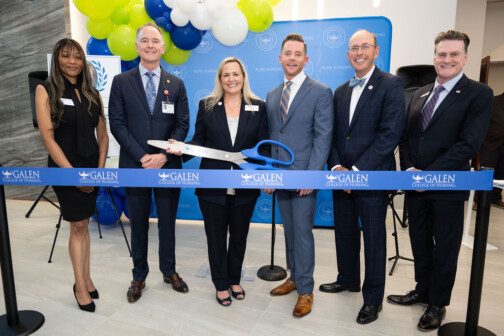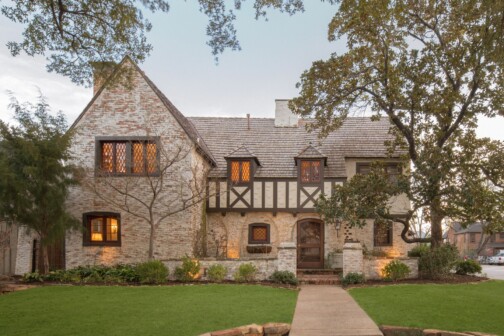
We provide design services for retailers and shopping center developers owners nationwide. So I read everything I can to attempt to gain insight into the conditions and situations in the retail marketplace. To say that there is a division of thought is a gross understatement. Statements like: the Internet will kill shopping malls; omni-channel retail is the way of the future; shopping malls are back; and the marketplace is fragmented and psychotic (well … maybe a little).
We know that there are dying or dead malls. There are ghost malls. There are malls with high vacancy rates, low foot traffic, and anemic sales. Then there are malls that are doing well and are indeed thriving. In some situations, these malls are next door to each other.
Malls sometimes kill each other. Or maybe, the local economy is poor. The original demographics of the area surrounding the mall have dramatically changed wherein the customer profile has changed and the mall’s “target audience” has disappeared. A new mall with the “right” shops (H&M, Forever 21, etc.) is built five miles away and is new and “shiny.” If you are a Sears’ shopper, you probably do not visit Nordstrom’s often and vice versa. The old mall dies.
Right now there appears to be a significant divide between have- and have-not malls. Class “A” malls seem to be doing fine but sales at class “B” and “C” malls are certainly less robust. Luxury or “high end” Malls are big business. But not everyone wants, or can afford, to shop at Neiman Marcus.
People who know these things tell us that over 80 percent of malls/shopping centers are doing well. That means that slightly less than 20 percent are in trouble. There are nearly 100,000 malls/shopping centers, so even if most are faring well, there are still a lot of visible problems. 75 percent of Americans visit the shopping mall or store at least once per month. The shopping experience is part of our life and lifestyle. So what might be wrong with the dying mall? x
Is the underperforming mall not well laid out? Has the mall been updated in recent history? Was the mall allowed to languish during the economic downturn beginning in 2008? What is the occupancy ratio? Are there lots of dark storefronts? Is the mall itself dark? Are there dead ends? What are the bathrooms like? Do the bathrooms more closely resemble your junior high school locker room, or your favorite luxurious spa? What is the parking lot like? Are there weeds? Is there a lack of healthy looking landscaping? Does the parking lot appear to be safe? Is the parking lot well lit? Do people passing by even know the mall is still open and functioning? Are coveted (hot) national retailers clamoring to be admitted or, for some reason, have they been rejected? Or do they even care?
Here are a few facts to think about. Ninety percent of all retail sales are in stores. Nearly 95 percent of all retail sales are with retailers that have both an “online” presence and “brick and mortar” stores. The internet accounts for slightly less than 6 percent of retail sales. Hence there is the rise of “omni-channel” marketing. Retailers want stores and a robust website; they want to be featured and “pinned,” “friended,” and “liked.” Blue Nile, Garnet Hill and Bauble Bar – heretofore internet retailers – are building physical stores.
We also all know that consumer behavior has changed. Potential buyers often use social media to learn about other buyers experience with a product, service or a particular retailer. Many shoppers will research a product online prior to going to the store to purchase it. Why just not complete the order online? There are some things that people just want to see in person. They want to touch the item, feel the texture, try it on, see how the item looks on them, etc. On the flip side of that scenario are those shoppers that look at an item in the store and then search on their mobile device to compare prices at other stores, other sales opportunities, or perhaps some similar item that offer a better value.
We shop in different ways than we have historically, but we still shop. We don’t wait for the clipper ship or the caravan to arrive from some exotic locale to dispense its goods. We don’t have the kind of yearly cycles that set an agenda for consumer goods like the medieval markets and fairs. There are “pop up” shops, food trucks, treasure trucks (a current update on the peddler’s wagon).We want our shopping experience to be easy, rewarding, convenient, experiential, and joyful. And if shopping can enrich our lives and make us thinner or more beautiful, bring it on.
New Shopping Center Strategies
So what are experts suggesting that the new shopping center or the well-positioned vigorous and extremely healthy existing mall do to continue to attract shoppers? Lots of things! We are probably preaching to the choir here, but maybe there is an idea here that’s new:
1. Let’s make sure that the physical mall itself has the “WOW” factor and strengthens its brand. This means wonderful, engaging design, terrific levels of service, great products from domestic and international sources, entertainment, and both a well-done food court, along with superb restaurants and delightful drinking establishments. We have also seen that a highly regarded public arts program (for instance, North Park) can serve to elevate the place and differentiate it from its competitors.
2. Are the common areas splendid and grand? Are the entrances big and tall? Are the entrances well enough lit at night that you can see them from the adjacent street? Can you change colors in the lighting fixtures on a seasonal basis? Is there enough natural light coming into common areas? If needed, could a skylight or two be added to improve the overall ambiance? Are the common area materials a light neutral shade/color palette that looks rich and inviting? If there are dark finishes, can they be removed without totally disturbing the shopping experience? Can the shopper see through the handrails to look across the mall, up and down to see other stores? Are the food courts and restaurants in the right place? We have some good examples of local malls that have shown a number of different ways to deal with natural light well. Think about North Park, the Galleria, Golden Triangle Mall, and Northeast Mall. Their various light solutions are different, but effective in their own ways. Are the bathrooms clean and fresh smelling? Are the materials appealing? Are they well lit? Can you see yourself in the mirror? Can you place a package on the restroom floor without it becoming toxic?
3. Is the mall fun? Is it lively? Are there any possibilities to add other functions like housing, libraries, a bowling alley, a performance space, a sporting component? Is there enough space to create a common green area large enough to incorporate a small bandstand, a splash pool, trees and seating that people can use as a park? Might there be a water feature that could be large enough for paddle boats, kayaks or ducks? Might there be some consideration given to using a large vacant “big box” as some kind of educational or community facility? Can a fun place also include a work/live component? Can the mall truly turn into the center of the community?
4. Are there other activities or uses that can be added to or around the peripheral area of the mall that can bring people (not just shoppers) to the area of the mall generating vehicle and foot traffic that is well managed, yet not an imposition. The Woodlands Mall has the Mitchell Pavilion for concerts and plays. The Galleria has an ice rink. Would offices and a hotel improve the dynamic of the place? Many shopping areas already incorporate cinemas. We go to the “drug store” to go to the mini-clinic. In some locations we will go to the mall for minor medical procedures or exams. Can the area of the mall become the leader in true mixed-use development and bringing together elements that enhance ones lifestyle, making our lives easier?
5. Is the mall “wired up?” If you are buying a birthday present for your child and you want to call your wife and ask about a size, or send a photo of a cute toy, cell service. If you want to do some internet comparison shopping while in the store and see if Best Buy, Walmart or Amazon is the most cost effective, you would like internet capabilities. Convenience! The malls have the touch and feel experience, but it would be great if they also had the online experience available. What if someone wants to go to social media and look at a review of a particular product, the mall and stores need to facilitate that happening. There is also the “big brother” aspect to mall/store shopping where technology allows the store or mall to monitor the shoppers locations, shopping patterns and what they have looked at even going so far as to suggest other possible purchases. The mannequin has eyes and sensors. Someday, technology might even allow you to reserve a parking place at the mall.
So the mall of yesteryear as we thought we knew it is probably dead. The mall of tomorrow or next week will be different from the mall of yesterday. Long live the mall/shopping center of tomorrow or until our lives change again. Keep it fresh, sparkly and exciting!
And don’t forget to check out the Parade of Playhouses at NorthPark Center benefiting Dallas CASA from July 10 through the 26!





